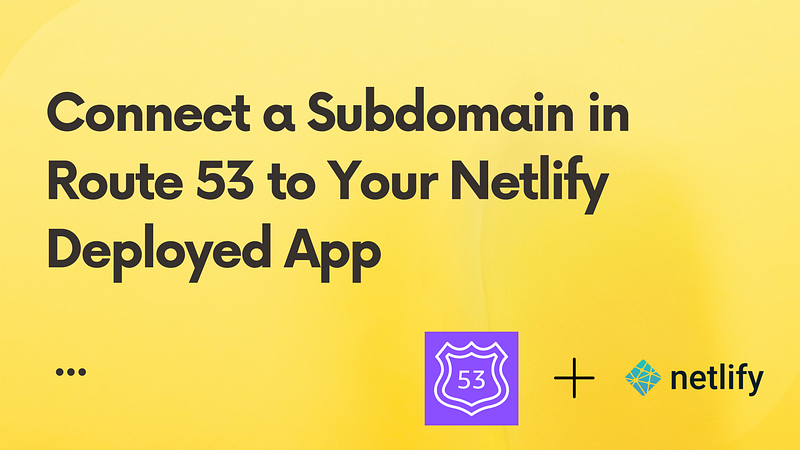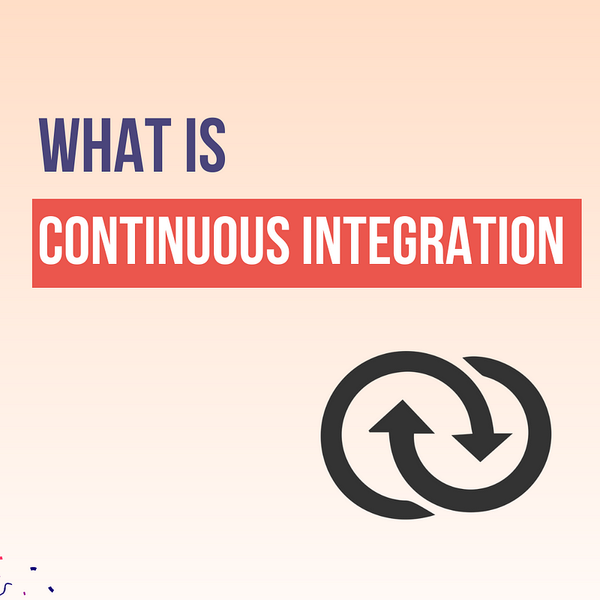How to Connect a Subdomain in Route 53 to Your Netlify Deployed App
In this guide, we’ll walk you through the steps to connect a subdomain (e.g., builder-platform.aime.works) from Amazon Route 53 to a…

In this guide, we’ll walk you through the steps to connect a subdomain (e.g., builder-platform.aime.works) from Amazon Route 53 to a Netlify-deployed app. We will also cover how to verify your domain ownership using a TXT record, a common practice for domain validation.
Prerequisites:
- Route 53: Your domain, “root domain”, is managed through AWS Route 53.
- Netlify: Your site is deployed on Netlify, and you want to link the subdomain “subdomain” to that app.
Step 1: Add Custom Domain in Netlify
- Log in to your Netlify Dashboard: Head to Netlify and log into your account.
- Go to your Site’s Domain Settings: In the Netlify Dashboard, select the site you want to connect to your subdomain.
- Navigate to Domain Management > Add Custom Domain.
- Enter your Subdomain: In the “Custom domain or subdomain” field, type your
subdomain name. - Click Verify. Netlify will now give you instructions on how to verify the domain.
Step 2: Add the TXT Record in Route 53 to Verify Ownership
Netlify requires you to prove that you own the domain or subdomain before connecting it to your site. This verification process is done by adding a TXT record to your domain’s DNS settings.
Here’s how you can do that:
- Log into AWS Route 53: Open the AWS Management Console and navigate to Route 53.
- Find Your Hosted Zone: In the Route 53 dashboard, click on Hosted Zones and find your Root domain.
- Create a New TXT Record: Click on Create Record. In the pop-up window:
- Record Name: Enter
"host name given by netlify”(this is the "Host" value provided by Netlify). - Record Type: Select
TXTfrom the drop-down list. - Record Value: Paste the value provided by Netlify:
"string given by netlfiy". Be sure to include the quotation marks exactly as shown. - TTL: You can leave this at the default value or set it to
300seconds for faster propagation. - Save the Record: Click Create records to save the changes.
Step 3: Wait for DNS Propagation
DNS changes, including TXT records, take time to propagate throughout the internet. This can take anywhere from a few minutes to 24 hours, though it’s usually faster. In most of my experience it takes 3–5 minutes.
Step 4: Verify Domain Ownership in Netlify
Once the TXT record is added, go back to the Netlify Dashboard:
- Return to Domain Settings: In the Netlify dashboard, navigate back to the Domain Management section for your site.
- Verify DNS Settings: Netlify will automatically check the DNS records for
subdomain name.
If everything is correct, Netlify will verify the domain ownership, and you’ll be able to link subdomain name to your app.
Conclusion
Connecting a Route 53 subdomain to a Netlify-deployed app involves adding a TXT record to verify domain ownership, followed by updating your DNS settings. With just a few steps, you can have your custom subdomain pointing to your Netlify-hosted app.
If you encounter any issues, remember to double-check the DNS records and verify that everything is set up correctly in both Netlify and Route 53.
Happy Deploying!
#Netlify #AWS #Route53 #DevOps





